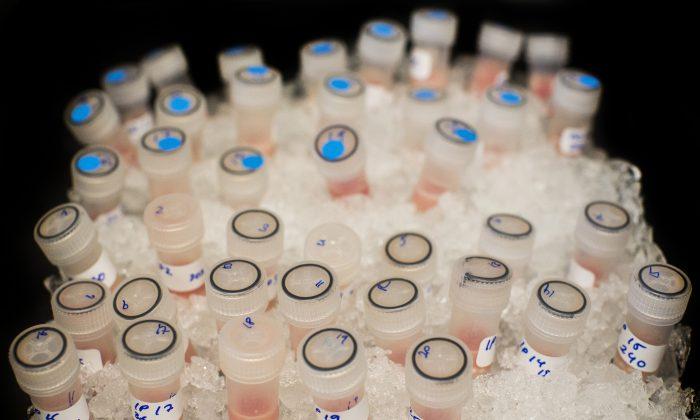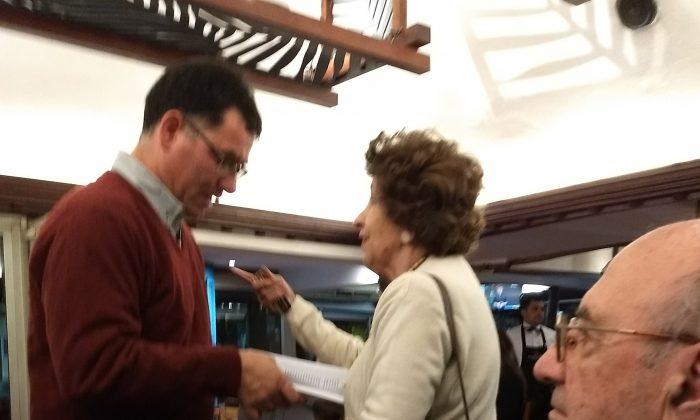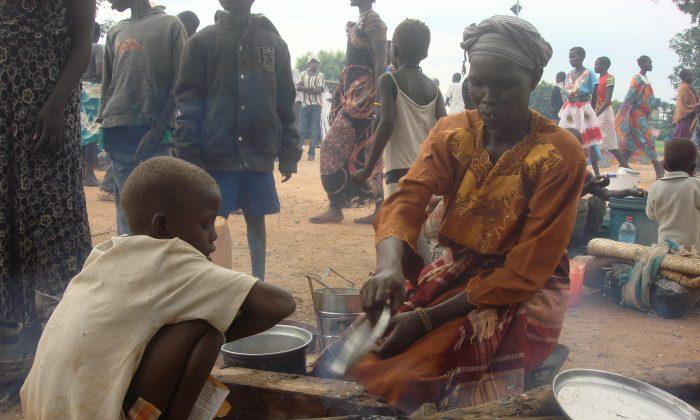In 1890, an Italian clinician found that sex workers with cancer of the uterine cervix went into remission when they were vaccinated against rabies. For several years afterward, the doctor traveled the Tuscan countryside injecting women with saliva from a dog with rabies. Results, however, were not recorded.
Years later, in 1904, an Italian woman went through two unpleasant experiences: She was bitten by a dog, presumable with rabies, and she was diagnosed with cancer of the uterine cervix. She was given the rabies vaccine for the dog bite and afterward her “enormously large” tumor disappeared—“il tumore non esisteva più.” The woman was able to live cancer-free until she died in 1912.
Based on these experiences, Nicola De Pace reported in 1910 that several other patients with uterine cervical cancer received the rabies vaccine with a weakened rabies virus, unable to produce the disease. De Pace stated that tumors in some patients shrank in size, although all of them had a relapse from their cancer and died as a result of it.
Among cancer tumors, Glioblastoma multiforme (GBM), also known as glioblastoma, is the most common and most aggressive cancer that begins within the brain. It is also one of the most difficult cancers to treat. Even Senator Edward Kennedy, who had every economic and scientific resource available to him, survived only 15 months after he was diagnosed with the tumor. This is the statistical average survival for patients diagnosed with GBM.
A group of doctors and scientists perhaps had these experiences in mind when they decided to treat this aggressive and lethal kind of cancer with a modified polio virus. This modified polio virus kills cancer cells but not normal cells, since its ability to grow depends on biochemical abnormalities only present in cancer cells.
Dr. Matthias Gromeier, a molecular biologist at Duke University in North Carolina, re-engineered the polio virus, removing a key genetic sequence so as to render it harmless to the patient. The modified virus is then injected directly into the patient’s tumor, thus ensuring that the maximum amount of virus is delivered into it.
One of the first patients treated with the modified polio virus was Stephanie Lipscomb, a 20-year-old nursing student. She had been experiencing unremitting headaches when, in 2011, doctors found a glioblastoma the size of a tennis ball on her brain. She had 98 percent of the tumor surgically removed, and then she received intense radiotherapy and chemotherapy only to relapse. At that point she was willing to try anything.
When she was offered the possibility of directly infecting the tumor with the modified polio virus she eagerly accepted. The doctors explained to her that genetically engineered viruses such as polio in this case could potentially infect and destroy human cancers without appreciably harming healthy tissues. In addition, the polio virus removes a protective shield of the cancer allowing the immune system to further act against the cancer.
After three years of infusing the tumor with the modified polio virus something, until then unimaginable, happened: The tumor had disappeared. Not all patients who had this treatment were equally lucky. However, the results with Stephanie were so promising that the U.S. Food and Drug Administration (FDA) decided to grant this medical intervention “breakthrough status.”
Breakthrough status means that phase II of the trial will expand to roughly 40 institutions around the country, with hundreds of patients to be followed. If things proceed successfully, Duke University Medical Center will be allowed to skip the third phase of the trial and make this innovative therapy available to all. The Duke group has also planned future clinical trials in patients with other kinds of cancer.
Although some results of this kind of treatment are encouraging, we should be cautious in predicting its future success. Many more trials and disappointments may still be on the way. However, the few people who have been treated successfully have had a new opportunity to enjoy life. Today, several more viruses are being tested in humans, either alone or in combination with existing treatments.
Stephanie Lipscomb, who was the first patient at the clinical trial that started four years ago has become a nurse and is interested in specializing in pediatric oncology, dealing with children affected with cancer. When Scott Pelley, from the TV program “60 Minutes,” asked her if she thought that she had survived her ordeal for a reason she simply answered, “Oh yes, most definitely.”






Friends Read Free